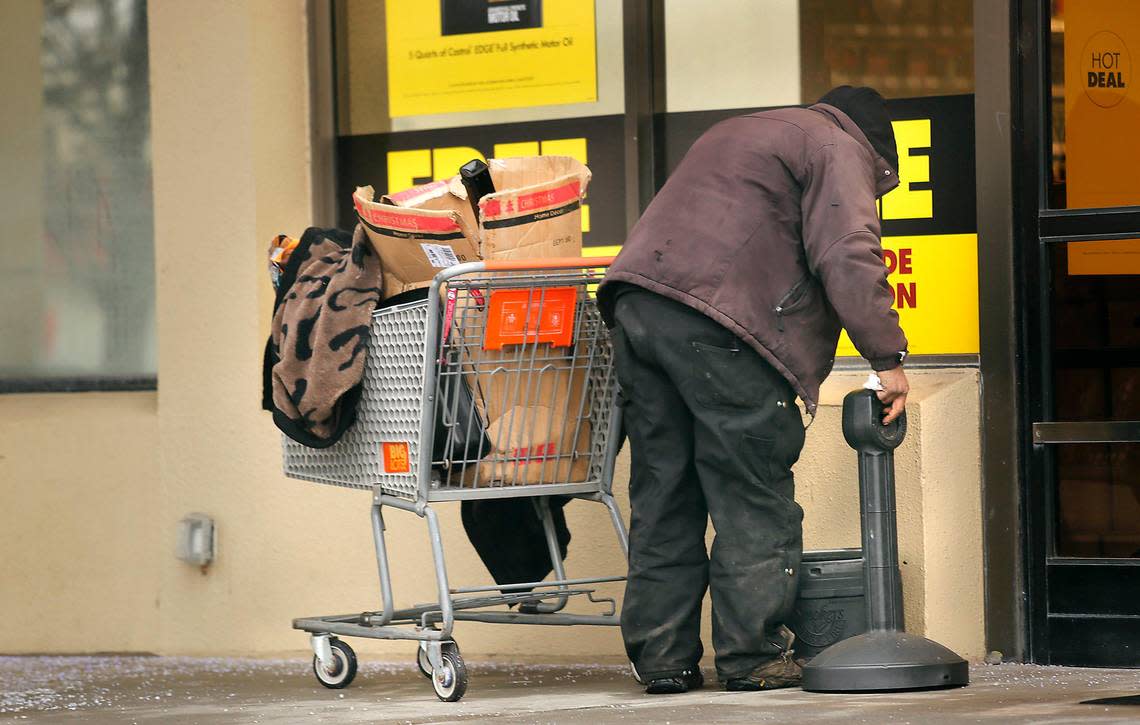‘So many fragile families.’ End of pandemic housing aid has Tri-Cities bracing for the worst
New data from the state shows that housing insecurity is growing in the Tri-Cities, but are there really more than 4,000 homeless in Benton and Franklin counties?
Experts say it depends on who you consider homeless, but regardless of how they’re counted, their need should be considered critical.
And they expect it to get much worse later this year when various pandemic-related housing funding ends between July and September.
Some local school districts already are bracing for an increase in unstably housed students this fall.
The state’s 2023 Continuum of Care snapshot shows 4,086 people are considered either homeless or in emergency shelter in Benton and Franklin counties. And 5,854 are considered unstably housed or homeless.
That’s up 7% year-over-year, and 34% higher in the past five years.
While experts believe that the snapshot number is an overcount, they say it does paint a more accurate picture of the number of people at risk of being on the streets in the Tri-Cities.
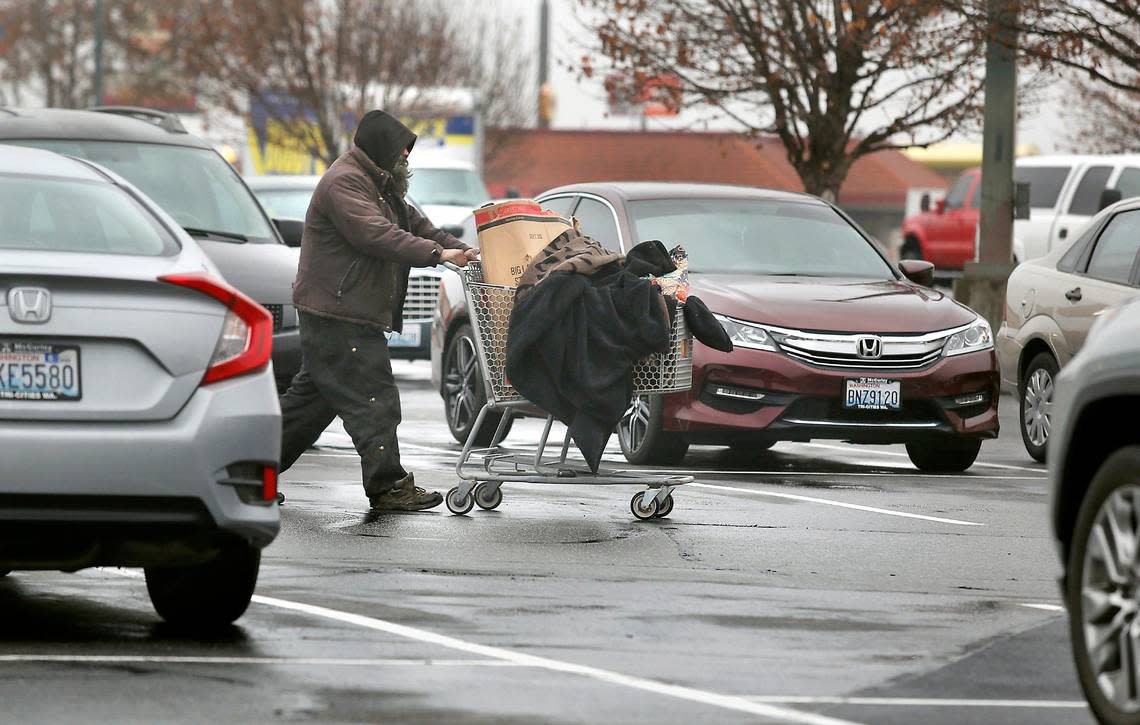
Who is considered homeless?
The snapshot creates an estimate on the number of unsheltered and unstably housed people across the state by combining information from Medicaid claims, Department of Social and Health Services data, such as food aid and SNAP, and information from the state’s Homeless Management Information System (HMIS).
People considered unstably housed are at risk of homelessness, and are placed in this category if they are considered homeless with temporary housing, staying at a day shelter, are in a homelessness prevention program or a coordinated entry homelessness diversion program.
Those considered homeless are folks in domestic violence shelters, emergency shelters, homeless without housing or completely unsheltered or are in an inappropriate living situation.
People receiving state benefits who put homeless, couch surfing or general delivery in place of the address field also are considered homeless.
The Homeless Management Information System also considers anyone in shelters, transitional housing and supportive housing as homeless.
For example, families in the Catholic Charities’ soon to open Bishop Skylstad Commons supportive housing apartments in Pasco will be considered homeless in that system.
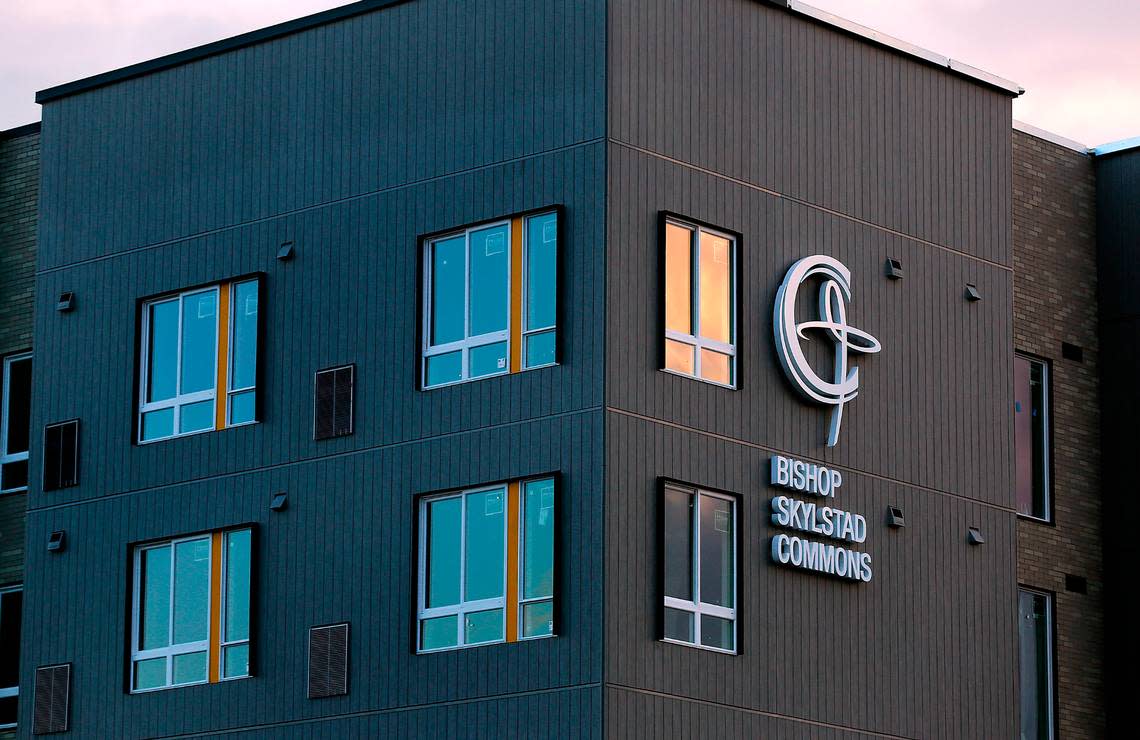
LoAnn Ayers, president of United Way of Benton and Franklin Counties, said homelessness and housing insecurity are prevalent in many ways that people might not think about.
“When you think about housing and security, it’s really a spectrum,” Ayers said. “Whether it’s a high school student or elementary kiddo whose parents lose their apartments and they move in with a family member, or into a home with a friend, that’s housing insecurity and it occurs every day in our community.”
The numbers included in the snapshot also encompass groups of people who might not identify as homeless or housing insecure because of misconceptions.
Ayers said that no matter where someone falls on that spectrum of insecure housing, they should seek help before things get worse.
“If you’re in it, it’s bad,” she said. “If you don’t know where you’re going to sleep tomorrow, how do you hold a job? You don’t have an address.”
Counting the homeless
The snapshot is compiled twice a year by the Washington Department of Commerce.
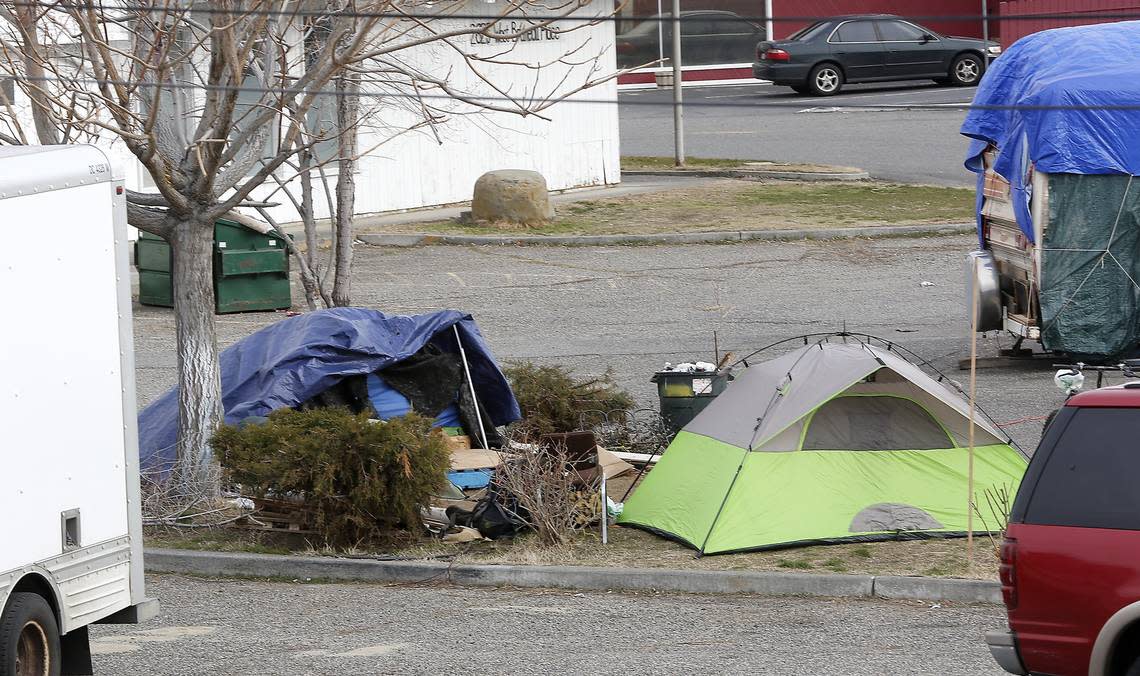
It differs from the annual Point in Time homeless count that cities and counties perform each year in January. The point in time count tallies the number of people found on the streets or at an emergency shelter in a single day.
Benton County Human Services Manager Kyle Sullivan said that he expects this year’s count to only reflect 100 to 200 people. Those are the people with the most critical need, and often face the most difficult path to obtaining and keeping assistance.
“The PIT count is probably a flawed measure, it takes one day out of the year in the middle of the winter. It’s a starting point,” Sullivan said. “We have COVID dollars right now that allow us to take people that have been unsheltered and put them up in hotels. All of those programs are going away, the rental and utility assistance programs will be shut down June 30.”
“We still continue to see a huge need for people trying to access rental assistance. We talk to people that are months and months behind on rent. I think that when that funding dries up, it’s going to create a problem,” he said.
“The Tri-Cities vacancy rate (has been) below 1%, so if a person has an eviction on their record it’s going to be hard. I think we’re going to see a new housing crisis,” he said.
Sullivan said they also expect to take a hit this year on state funding because a large portion is supported by document fees when financing new homes, and spiking interest rates are keeping people from refinancing their homes at the rate they were at the beginning of the pandemic.
Sullivan has helped spearhead local initiatives for supportive housing that redirects those fees to families who need help.
So now they’re working to ensure that all of the families using their help know what’s coming in order to help them prepare for the potential loss of money.
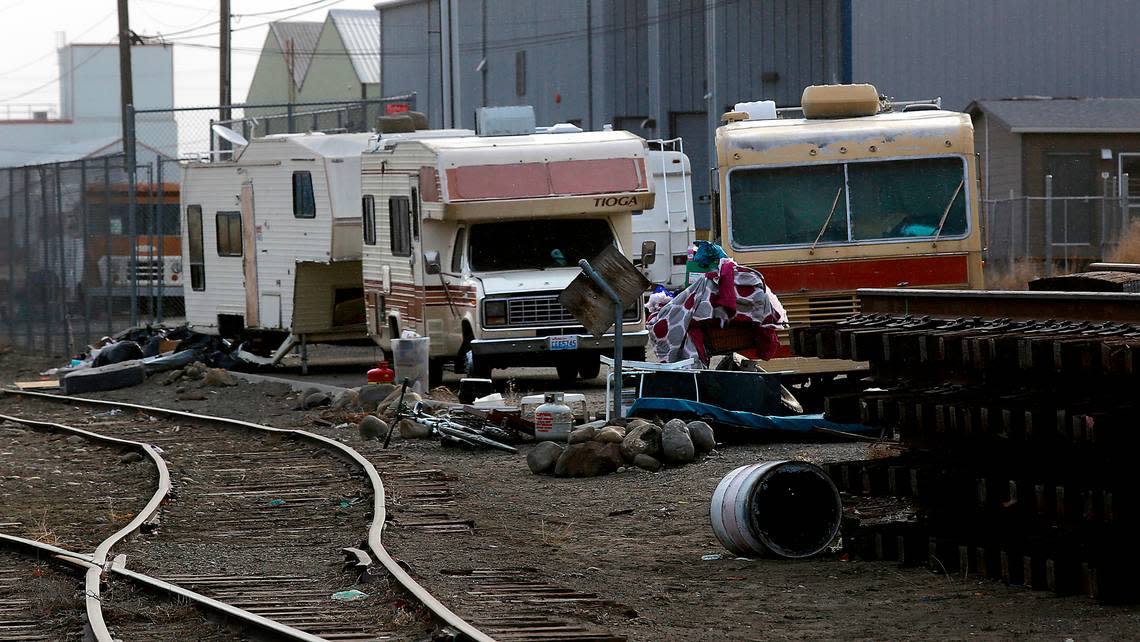
Families at risk
More than 1 in 5 people considered homeless in the area are members of families with children. That number jumps to 1 in 4 when adding in unstably housed numbers.
Ayers said that local school districts are readying for more homeless, unsheltered or unstably housed students at the beginning of next school year, as the housing assistance some families rely on to make ends meet dries up.
Ayers said it’s important to remember students considered homeless can include those staying with extended family, couch surfing or taken in by the family of their friends.
She said it’s critically important to identify those children because being homeless with children makes the situation even more complex, and difficult to navigate.
“If they’re known, schools have some special support for them,” Ayers said. “It’s super important because when kids have unstable housing it is a significant barrier to learning. It effects health. It affects safety.”
That extra support is important because there is limited shelter space for mothers with children in the Tri-Cities and effectively none for fathers with children.
Tri-City Union Gospel Mission, which runs the only homeless shelters in the area is currently fundraising for a larger women and children’s shelter, but that is years out from becoming a reality.
“Shelters have different requirements. UGM is the one in Pasco most people think of, and they do a really good job for some people,” Ayers said.
“But if you are a dad with children there is no shelter in the Tri-Cities for you. You’re living in the car, in the hotel room when you can afford it, living in campgrounds. So we have some holes, there are barriers to accessing shelter space and time limits.”
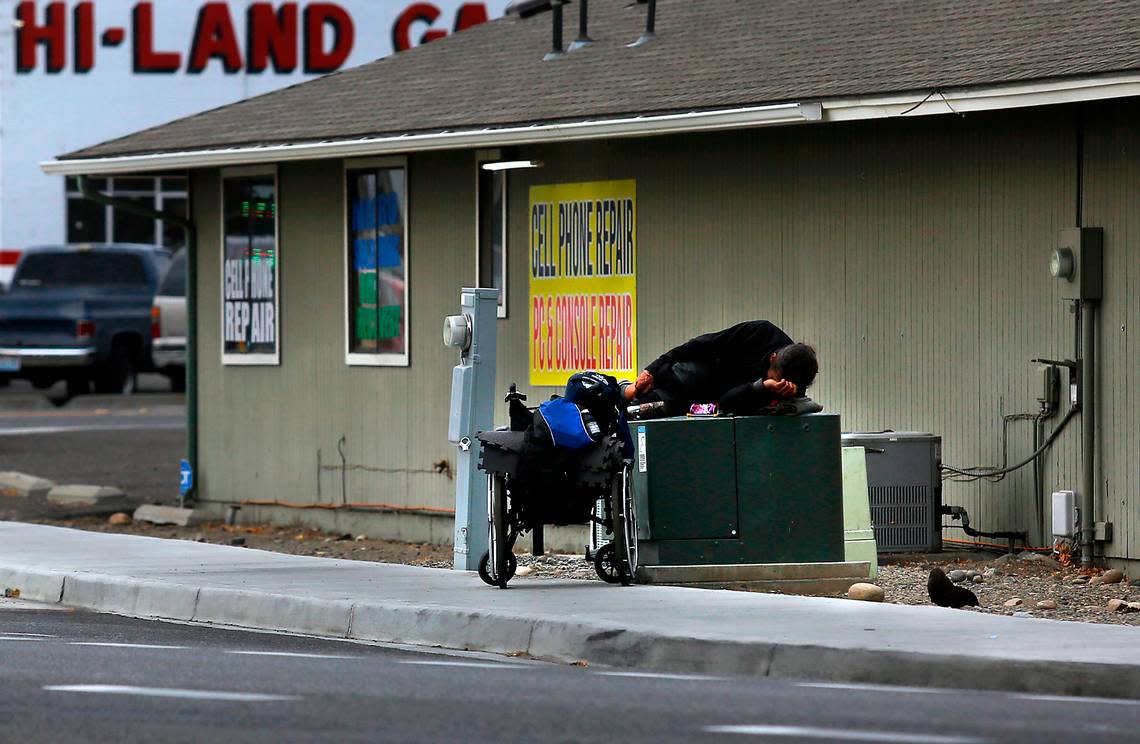
With rental assistance drying up, families barely making it are going to be at higher risk of losing their housing.
“We are already hearing those fears,” she said. “I think the schools, anecdotally, are preparing for an influx of homeless students next fall. We have so many fragile families, and rent is increasing.”
While student homelessness has dropped over the past 10 years, across the state and in the Tri-Cities area, the snapshot data shows a nearly 20% increase in families with children either homeless or unstably housed in the past year. That change represents an increase of 326 members of families at risk of homelessness in the Tri-Cities area from January 2022.
She said the good news is that eviction can be a long process that gives families time to recover, but if they are evicted then it becomes even harder to rent because of the low vacancy rates in the area. While a landlord cannot legally discriminate on who to rent to, they do have the ability to determine which applicants to take based on rental history and credit scores.
Ayers said seniors are also going to be at a much higher risk because rent is rising, but their retirement or disability benefits are not.
The average rent for a 1-bedroom apartment in the Tri-Cities is just shy of $1,150 per month, according to spring 2023 rental data from the University of Washington’s Center for Real Estate Research.
“Another segment of insecurity is seniors on a fixed income,” she said. “Even if you’re working, (rising rent) is a tough bit. Think about being on a fixed income and everything else is going up. It’s a spiral that is unhealthy.”
Ayers said it can be confusing figuring out where to get help in a bi-county area across four cities, so she recommends just calling 211 to get started. The Washington Connections website also brings together services and applications in one place.
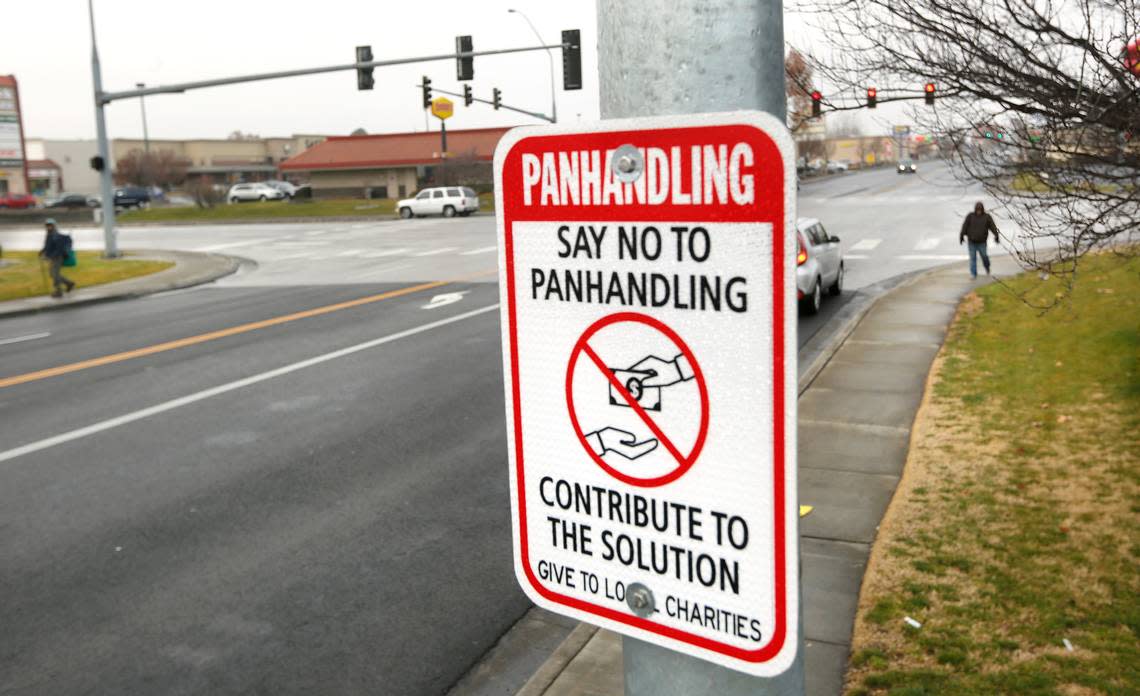
Better than WA state
Shifts in homelessness and housing instability are also tracked by Patrick Jones, who leads the Institute for Public Policy and Economic Analysis at Eastern Washington University.
Jones said that the Tri-Cities numbers are better than Washington state in many ways, but they’re still high.
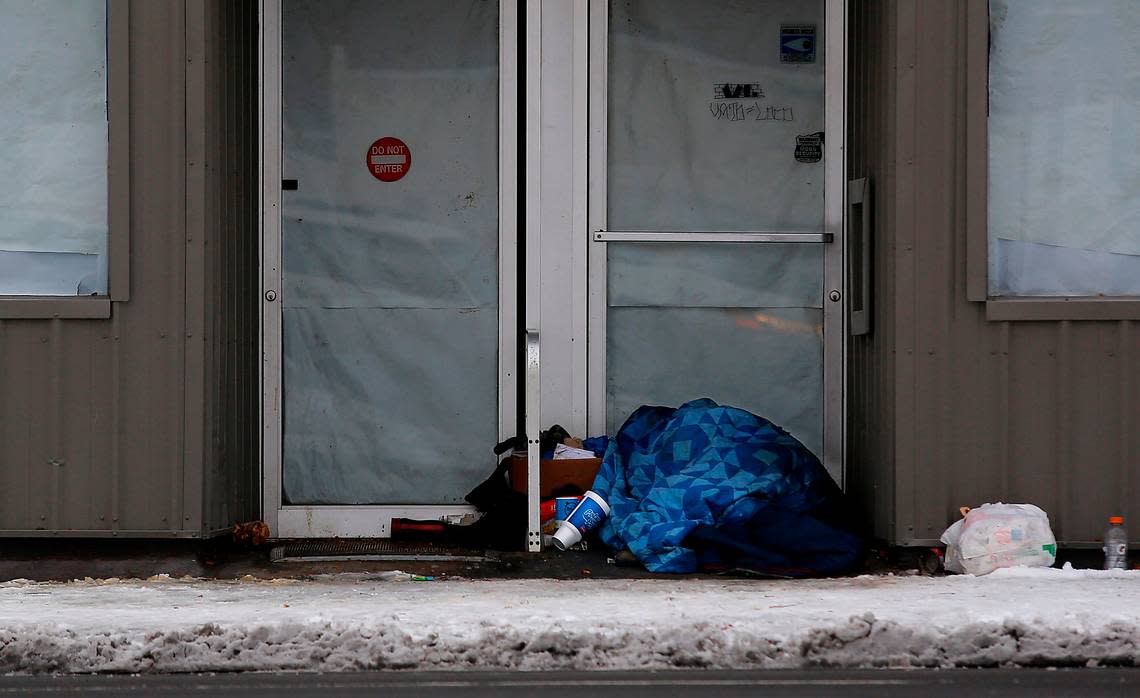
“The Tri-Cities performs a little better than the averages, but the fundamental question is, ‘Are those averages acceptable or not?’” Jones said.
“And I think what we’re seeing in many communities is that the homelessness we’re seeing is just unacceptable, and it’s without regard to what it looks like in other cities,” he said.
Homeless exit rates in the Tri-Cities are a double-edged sword, according to data he recently presented to the Columbia Basin Badger Club.
While the rate of homeless people moving into assisted or supportive housing is much higher than the rest of the state, the Tri-Cities also sees a higher rate of people returning to homelessness within two years.
Despite the bad news, he does feel like some initiatives in the Tri-Cities are making an impact.
“I think what’s going on, on the east side of the river in Pasco, is significant, getting permanent supportive housing for the first time is big,” he said. “I think there’s more need than just the 62 units this (Catholic Charities) project would put up, and I would hope that somehow, someway the greater Tri-Cities would replicate what they’re doing.”
Jones said that some of the major barriers in the region include::
A growth rate of household income being at only about one-third the growth rate of rents
Inventory of housing has been critically low for a long time
Vacancy rates for rentals averaged less than 2% from 2016 to 2021
“A lot of these people are just hanging in there by a whisker and when that whisker goes, so goes their stability and housing,” he said. “I’m not surprised to hear they’re expecting an increase (later this year).”
While any solution is complex, he believes there are three major areas that can go a long way toward impact rates of homelessness and housing instability — good paying jobs, low- and middle-income housing and treatment for addiction and mental health issues.
